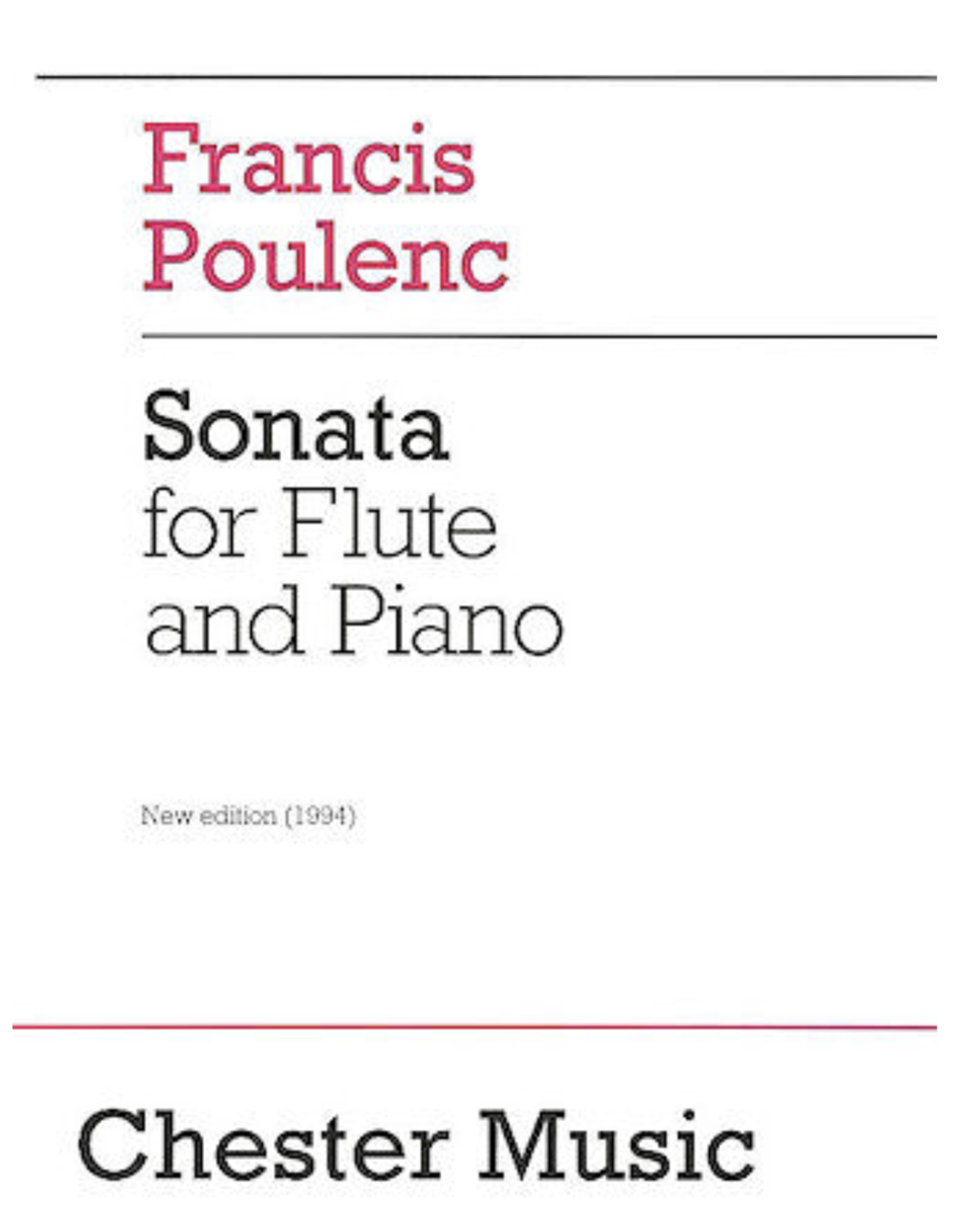
- Francis Poulenc Sonata For Flute And Piano Pdf
- Francis Poulenc Sonata For Flute And Piano Free Sheet Music
- Francis Poulenc Sonata For Flute And Piano Imslp
Francis Poulenc wrote his Sonate pour flûte et piano in 1957 in response to a commission from the Elizabeth Sprague Coolidge Foundation at the U.S. Library of Congress. The work is dedicated to the memory of Coolidge, one of the twentieth century’s greatest champions of chamber music.
A sense of restless melancholy pervades the first movement (Allegretto malincolico) of Poulenc’s Sonata. It opens with an expansive melody filled with delightfully unexpected twists and turns. Often, this music seems to glance back at the elegant lines of baroque and classical music. At the same time, it pays homage to a distinctly French clarity. While working on the Sonata, Pouenc wrote in a letter to his friend, Pierre Bernac,
Amerco, LLC, 1991. Source Article: Wyber, Jana L. A Study of Francis Poulenc’s Melodic Style As Found in the Sonata for Flute and Piano (1956-57), the Sonata for Clarinet and Piano (1962) and the Sonata for Oboe and Piano (1962).1990. Biography: Francis Poulenc was a French musician and composer born in 1899. 6 Francis Poulenc Flute Sonata 1957 Play. Flute Sonatas, BWV 1030-1035. 4 Johann Sebastian Bach Flute Sonata Play. Join the Community.
Francis Poulenc Sonata For Flute And Piano Pdf
In working on this Flute Sonata I have the feeling of going back a long way, but with a more settled technique. It’s a sonata of Debussyan dimensions. It’s the French sense of balance [la mesure française]. Finding the form for your language is the most difficult thing. It’s what Webern has in the highest degree … and what Boulez has not yet found.
The second movement (Cantilena) is serene and songlike. It has been described as “‘a great rainbow of melody.” The final movement (Presto giocoso) is an exuberant romp filled with witty neoclassical caricatures. Listen for the moment when all of the frolicking forward motion halts in a brief pause, followed by a plaintive remembrance of a theme from the first movement.


Earlier this week the Frankfurt Radio Symphony released this performance, featuring their superstar principal flutist, Clara Andrada de la Calle with pianist Maria Ollikainen. The online concert was recorded on May 25. Following the Poulenc, we hear the episodic Ballade for Flute and Piano by the Swiss composer, Frank Martin (1890-1974).
Francis Poulenc Sonata For Flute And Piano Free Sheet Music
Poulenc’s Sonata of 1957 is dedicated to the memory of that champion of twentieth-century chamber music, Elizabeth Sprague Coolidge. The Sonata’s own cause was promoted by the Chesterian magazine (Spring 1958) which declared: ‘For Francis Poulenc, a medium such as Flute and Piano is ideal for expressing himself in his inimitable style. All flautists will wish to include it in their repertoire.’ For Poulenc himself, the strongest spiritual influence was that of his dear friend Raymonde Linossier; having completed his Sonata, he concluded: ‘It is Poulenc but very Raymonde, as with every composition for winds.’ Flautist Jean-Pierre Rampal gave the first public performance at the Strasbourg Festival on 18 June 1957, with the composer at the piano.The restless ‘Allegretto malincolico’ focuses on a descending chromatic idea, preceded by an arpeggiated flourish, with Poulenc enjoying major and minor inflections. Frequent trills and demisemiquaver tonguing attest to the flautist’s technique. The Classical legacy is evident in the piano’s Alberti-bass figurations, and the debt to the Baroque in the flute’s dotted rhythms within the slower middle section. A quiet, song-like ‘Cantilena’ explores the flute’s vocal qualities with an arching melodic contour: ‘a great rainbow of melody’. (Some have also noted connections with Poulenc’s contemporary opera, Dialogues des Carmélites.) Extensive use of smooth scalic figures is contrasted by more dotted rhythmic material in the central portion. The ‘Presto giocoso’ has a light-hearted, rondo-like character, again with a strong rhythmic identity; it enjoys imitative textures and cyclical elements, with an arpeggiated figure and later the dotted idea (‘mélancolique’) from the first movement, together with a thematic hint of the second (reaching up to a top C). A confident, extrovert reprise of the opening concludes, ‘strictly in time without any slowing down’
Francis Poulenc Sonata For Flute And Piano Imslp
from notes by Deborah Mawer © 2001